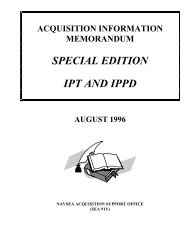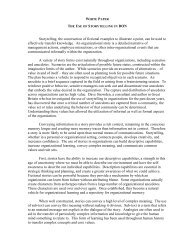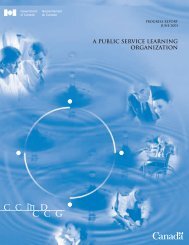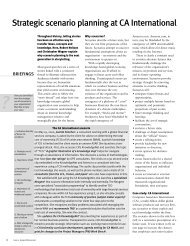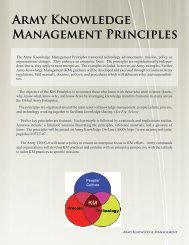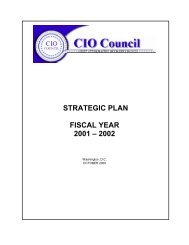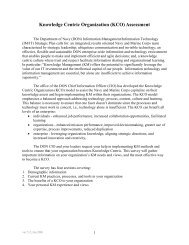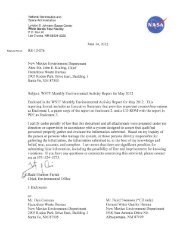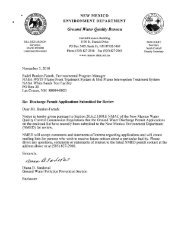NAVAL AVIATION SYSTEMS - NASA Wiki
NAVAL AVIATION SYSTEMS - NASA Wiki
NAVAL AVIATION SYSTEMS - NASA Wiki
Create successful ePaper yourself
Turn your PDF publications into a flip-book with our unique Google optimized e-Paper software.
CHAPTER XI: KEY TOPICS<br />
PART K: ENVIRONMENTAL ISSUES<br />
Purpose: This section addresses the impacts on the environment due to the design, development, production,<br />
operation, maintenance, and disposal of weapons and support systems, a business issue of major concern for this<br />
Command. These issues must be addressed in all stages of an acquisition (the earlier, the better) to avoid<br />
unacceptable costs, restrictions on systems mission and support due to environmental regulations, and degradation<br />
of the natural environment and wildlife.<br />
Source Documents: AIR-8.0Y prepared the NAVAIR Program Managers Environmental Guide in 1995 to provide<br />
guidance and strategies for meeting PM's environmental responsibilities. DODR 5000.2-R updates these<br />
responsibilities by requiring that a programmatic Environmental, Safety, and Health (ESH) evaluation be<br />
conducted as part of the acquisition strategy. The format for documentation of this process is determined by the<br />
MDA. This evaluation must address five specific areas of environmental concern:<br />
National Environmental Policy Act (NEPA) PMs must comply with NEPA by assessing any environmental<br />
consequences of the program's execution and providing any necessary documentation to the appropriate office(s)<br />
per SECNAVNOTE 5400. Also, per Executive Orders (EOs) 12114 and 12898, this requirement is expanded to<br />
cover federal actions in minority areas and in regions outside the U.S.<br />
Environmental Compliance Applicable federal, state, and local environmental regulations at all levels should be<br />
identified and integrated into program execution.<br />
System Safety and Health The PM is required to include system safety and health hazards, defined risk levels, and<br />
a plan that manages safety and health risks in this evaluation.<br />
Hazardous Materials The PM must establish a hazardous materials management program to ensure that, where<br />
possible, hazardous material usage is reduced or eliminated EO 12856 provides for an agency-wide goal of 50<br />
percent reduction in hazardous waste and toxic chemicals release by December 31, 19999.<br />
Pollution Prevention Pollution should be prevented or reduced at the source wherever feasible. All other pollution<br />
should be recycled or treated in an environmentally safe manner. EO 12873 establishes goals for waste prevention<br />
and recycling, and the procurement of environmentally safe products. Ozone Depleting Substances (ODS) should<br />
be eliminated from federal acquisition programs entirely.<br />
Implementation: In order to better support PEOs, PMs, and competencies, AIR-08Y has established an<br />
Acquisition Environmental Product Support Team (AEPST). The mission of the AEPST is to incorporate sound<br />
environmental planning and pollution prevention doctrine into the life-cycle requirements of TEAM programs.<br />
The main thrust of the AEPST will be program/corporate coordination and planning through the development of a<br />
Corporate Environmental Action Plan. Action officers from each competency will work with each other to develop<br />
this Plan and ensure its integration into specific programs through their IPT/FST involvement. Through this<br />
Corporate Plan, the AEPST hopes to provide guidance to PMs in their efforts to comply with laws and regulation<br />
regarding environmental, safety, and health issues.<br />
POC: Herman Varmall, AIR-8.0Y, Environmental Programs Office, 301-757-2137<br />
60



